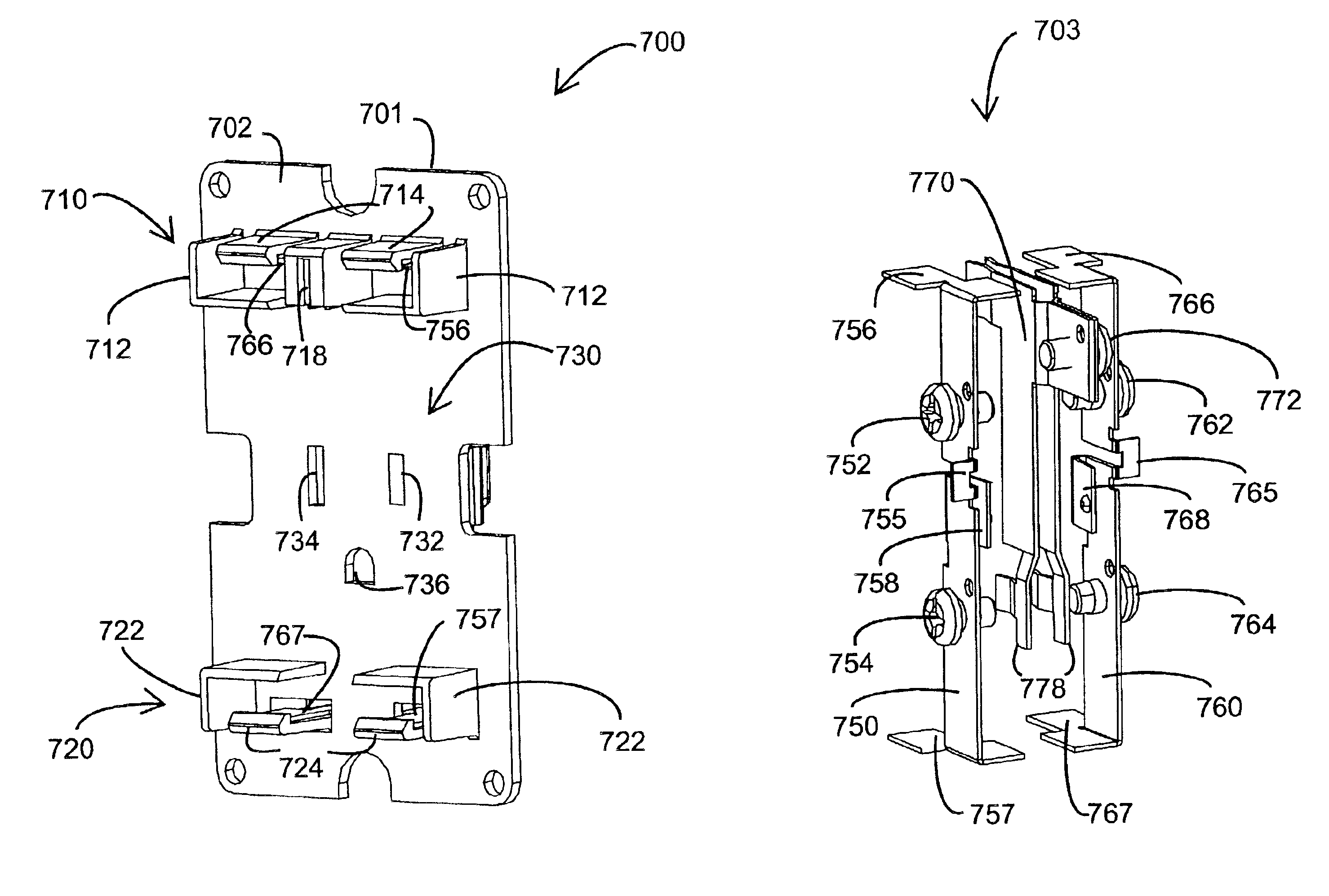Safety electrical outlet and switch system
a switch system and electrical outlet technology, applied in the direction of coupling protective earth/shielding arrangement, coupling device connection, contact member penetration/cutting of insulation/cable strand, etc., can solve the problems of electrical wiring construction, unnecessary installation costs, and installation of wall panels
- Summary
- Abstract
- Description
- Claims
- Application Information
AI Technical Summary
Benefits of technology
Problems solved by technology
Method used
Image
Examples
Embodiment Construction
System Overview
FIG. 2 illustrates one embodiment of an installed safety electrical outlet and switch system 200 according to the present invention. As shown in FIG. 2, the outlet and switch system 200 comprises a outlet assembly 310 and a switch assembly 360. Each of these assemblies 310, 360 provide a user-accessible electrical function. The outlet assembly 310 is mounted in a wall 210 and functions to supply a user with electrical power through a conventional AC plug inserted into an outlet module 800. The switch assembly 360 is also mounted in the wall 210 and functions to allow a user to control electrical power to an outlet, a light or any of various electrical devices (not shown) by actuating a switch module 900. The installed outlet assembly 310 includes a face plate 1000 and an outlet module 800 mounted so that its visible portion is generally flush with the face plate 1000. The installed switch assembly 360 includes a face plate 1000 and a switch module 900 mounted so that ...
PUM
| Property | Measurement | Unit |
|---|---|---|
| Power | aaaaa | aaaaa |
Abstract
Description
Claims
Application Information
 Login to View More
Login to View More - R&D
- Intellectual Property
- Life Sciences
- Materials
- Tech Scout
- Unparalleled Data Quality
- Higher Quality Content
- 60% Fewer Hallucinations
Browse by: Latest US Patents, China's latest patents, Technical Efficacy Thesaurus, Application Domain, Technology Topic, Popular Technical Reports.
© 2025 PatSnap. All rights reserved.Legal|Privacy policy|Modern Slavery Act Transparency Statement|Sitemap|About US| Contact US: help@patsnap.com



